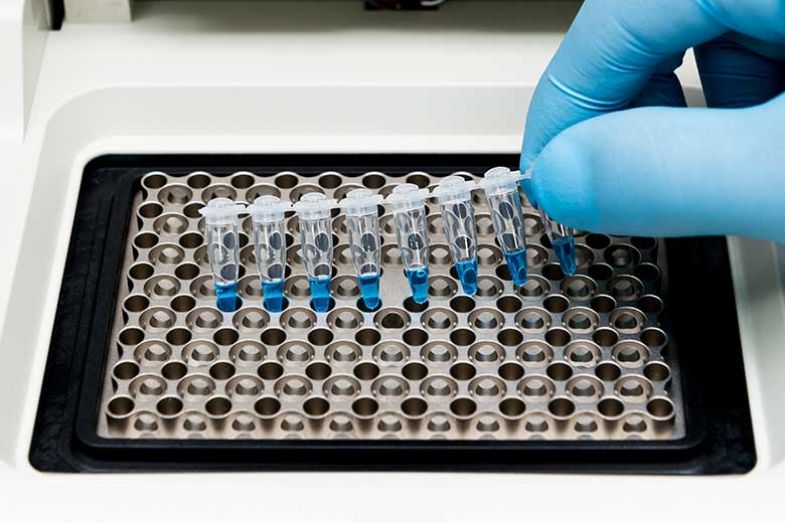
Source:
iStock

Alfaisal University’s diagnostic test could also be used to identify other diseases
Hundreds of diseases are associated with a flaw in the LMNA gene, and researchers at Alfaisal University in Saudi Arabia are picking apart its behaviour to diagnose some of the most serious conditions threatening their country’s inhabitants.
Diabetes and cancer, which have been linked to changing lifestyles, are serious health burdens in Saudi Arabia, and are likely to become more widespread as Saudis’ quality of life improves.
A 2018 article published in the Saudi Medical Journal found that, between 1990 and 2016, the incidence of thyroid cancer increased 26-fold, and there are 10 times more instances of breast, colon, bladder, and uterine cancers in the kingdom. Researchers estimate that about 7 million people are diabetic and 3 million are prediabetic, according to recent research. Government health officials have also said that more than 40 per cent of Saudi citizens are obese and up to 70 per cent are overweight, which puts them at greater risk of developing diabetes and cancer.
Ahmad Aljada, a researcher in Alfaisal’s department of biochemistry and molecular medicine, has worked with colleagues to develop and patent a diagnostic test to screen for early-stage cancer. According to the World Health Organisation, early cancer detection greatly increases a person’s chances of successful treatment.
Alfaisal explicitly includes health, biomedicine and pharmaceuticals in its research priorities, based on the country’s national policy for science and technology, its national development plan, and Saudi Vision 2030. Diseases, genetics, and biotechnology and biomaterials feature prominently within those prioritised research programmes.
Dr Aljada and his colleagues investigated the LMNA gene, which provides the body with instructions to make proteins called lamins. Two of these – lamin A and lamin C – are made in most cells. “These are involved in more than 350 laminopathologies [diseases associated with malfunctioning lamins],” he says. Many of these pathologies are linked to ageing.
For example, Hutchinson-Gilford progeria syndrome is caused by a mutation in the LMNA gene that affects lamin A production. Children with this syndrome begin ageing rapidly and then die young.
Dr Aljada began his career in diabetes research, investigating proteins linked with inflammation and diabetes. He suspected that these lamins, which encode for the strength and stability in cells, could be involved in other diseases and could be used to identify these diseases early on. “I’ve been trying to identify ageing proteins to assess their effects in different diseases, especially diabetes,” he says. Lamin A proteins have been linked to ageing. However, there were no specific tests for the different Lamin A proteins, which could identify the protein at fault. “They lacked specific assays to measure quantitatively each lamin A at the protein or n mRNA levels,” he explains.
This is what the research set out to create. In their latest work, Dr Aljada and his colleagues found a way to quantify the different levels of proteins, including lamin A and C, and discovered that a ratio of the two was a diagnostic marker for breast cancer.
The researchers investigated breast tissue from 16 cancer-free samples and 128 breast adenocarcinoma, which are malignant tumours. “We found that the expression level of lamin C was significantly increased in the breast tumors tested, whereas the expression levels of lamin A were significantly decreased,” the authors write in a 2016 article in the journal Cellular Oncology. In a 2019 paper, they showed a technique to quantify the different lamin A variants at a protein level.
They found that this diagnostic marker was especially effective for early stage cases of breast cancer. Although breast cancer is one of the most common forms of cancer in women, it is difficult to detect it early because it presents with very few symptoms. A test that could diagnose it early could save lives.
There are also indications that Alfaisal’s diagnostic test could be used for other cancers, such as colorectal.
With a view to having a practical impact, the research is not only published in academic journals: the researchers lodged a patent at the US patent office to protect their discovery.
“The goal is to license or commercialise the diagnostic test,” Dr Aljada says. “Our university is geared towards technology transfer and that’s what we’re trying to establish right now.”
Dr Aljada, who has been at Alfaisal since 2018, moved to the institution to collaborate with colleagues there. “I know in my department, there is a culture of collaboration,” he says, “and the university is encouraging a culture of collaboration” across the institution.
Alfaisal has formed research groups to facilitate internal and external collaboration. For example, Dr Aljada is part of the oncology research group, which allows for cooperation with others in the field.
The campus’ location complements its biomedical research. Located in the grounds of the late King Faisal’s Palace in Riyadh, Saudi Arabia’s capital and financial hub, Alfaisal University is near the King Faisal Specialist Hospital – something that Aljada notes is vital to his research. “It’s a five-minute walk away, and I’m collaborating with several researchers there, which allows me to use their research facilities,” he says.
Students at Alfaisal are encouraged to learn from and contribute to flagship research projects, such as its work on early-stage cancer detection. This is a strategic goal for the university, as it positions itself as a student-centred institution that enables its students to gain hands-on experience.
“Research, as well as recent trends, indicates that we must move from theory-based curricula to task-based curricula, allowing students to be exposed to the most up-to-date practices,” says the university’s president, Mohammed Alhayaza.
In Dr Aljada’s laboratory, there are undergraduates and postgraduates, some of whom were involved in this particular research. “Providing this kind of research environment is not easy, but it is going well,” he says. “[Students] love the research and it is an interesting experience for them. They’re very enthusiastic about it.”
Learn more about Alfaisal University.

























